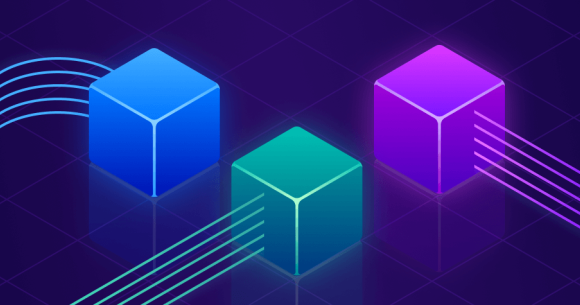Why banks need both on-premises and cloud container monitoring
Making the leap from using on-premises legacy systems to deploying microservices containers in the cloud is a big challenge for traditional banks. But there are ways to make sure both can work together.
Although container technology has been around for many years, its prevalence in the IT world has surged recently post-pandemic. Why? Increasing demand for application speed, scalability, and security.
Many traditional banks still rely on legacy systems developed decades ago, making it harder for them to compete against more nimble challenger banks. But the need to develop applications for better customer experience, is compelling. Over 85% of global enterprises say they will be running containerized applications by 2025, according to Gartner.
So, for financial institutions, container technologies are crucial components in the race to modernize and stay on par with fintech rivals. Containers bring many benefits from improving their application portability to better operational resilience.
The million-dollar question is how to monitor cutting-edge technologies like containers in an industry that is historically legacy-systems heavy.
What is a container?
In its simplest form, a software container can be thought of as a box that can package up application code, configuration files, libraries, system tools and anything else needed to execute the app. They combine these into a single unit, allowing for portability that the application can be moved or run anywhere.
Containers are key components of a microservices approach whereby applications are made easier to scale and faster to develop. This encourages innovation and faster time-to-market of digital services — vital for supporting enhanced security and greater regulatory compliance. Containers isolate the app from its environment, thereby eliminating potential environmental problems.
Challenges to monitoring
Monitoring containers is also different than monitoring other environments. The purpose of monitoring in containerized environments is to ensure your applications are running at peak performance levels by collecting operational data in the form of logs, metrics, events, and traces, and more — the hallmarks of observability.
These insights also benefit operators of containerized platforms. This data enables systems engineers to identify and respond to issues quickly in order to minimize disruptions, ensure operational resilience, and provide high-level observability metrics to further strategic business endeavors.
Why is this so hard to do?
Blind spots: Containers are short-lived. They can be quickly deployed but just as quickly destroyed, creating a struggle to track changes. They introduce several layers of abstraction between the application and the underlying hardware to ensure portability and scalability. Traditional monitoring tools can’t understand these abstractions.
Volumes of data: The easy portability of so many interdependent components creates an increased need to maintain telemetry data to ensure observability into the performance and reliability of the application, container and orchestration platform. Additional components added to the system also increase how many things must be monitored and checked when things go wrong.
Need for visualization: The scale and complexity introduced by microservices and containers requires the ability to both visualize the environment for accurate insight into your infrastructure health, along with the health and performance of containers, nodes and pods.
Pacing for DevOps: The accelerated deployment pace of containers makes it more challenging for DevOps teams to track how application performance is impacted across deployments.
The solution
A well-designed solution, such as ITRS Geneos, allows you to see your entire estate in one platform with monitoring that scales with you. It was designed with the banking and financial services industry in mind.
Geneos allows you to monitor servers, VMs, containers, on-premises or in the cloud, along with your cloud services and Kubernetes containerized infrastructures. It gives a holistic view, supporting greater observability from legacy systems to containerized microservices and enabling visibility across your entire technology stack. No other monitoring software can do both.
Conclusion
To keep up with increasing demands, today's financial institutions must shed their monolithic skins and become technology pioneers. Containers and microservices are an important cornerstone of this transformation.
It’s essential to understand how well your container environments are working. Infrastructure monitoring and application performance monitoring have become more essential after deploying containers, not less. By enabling state-of-the-art technologies and new services to be brought to market quickly, you can save time and money saved through faster development processes.
ITRS Geneos gives you the single-pane-of-glass view that spans from legacy to cutting-edge new technology - on-premises, in the cloud and in highly dynamic containerised environments.




